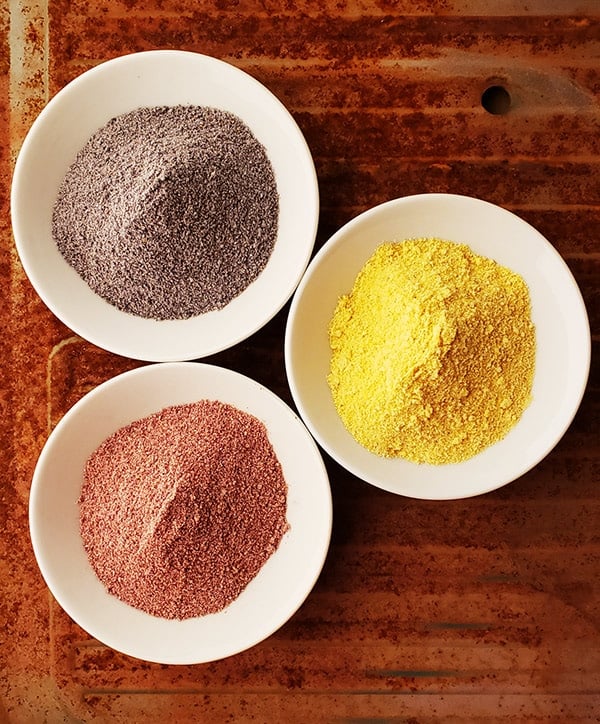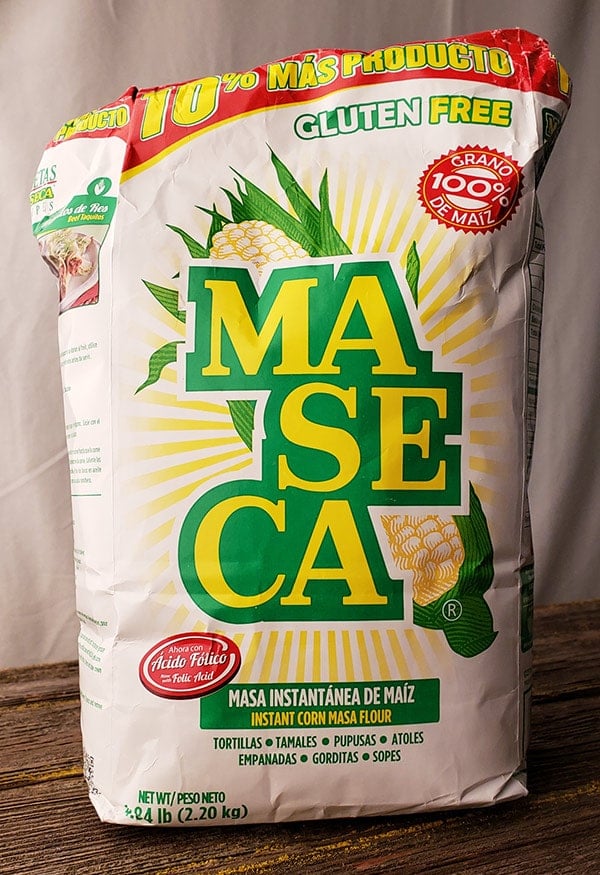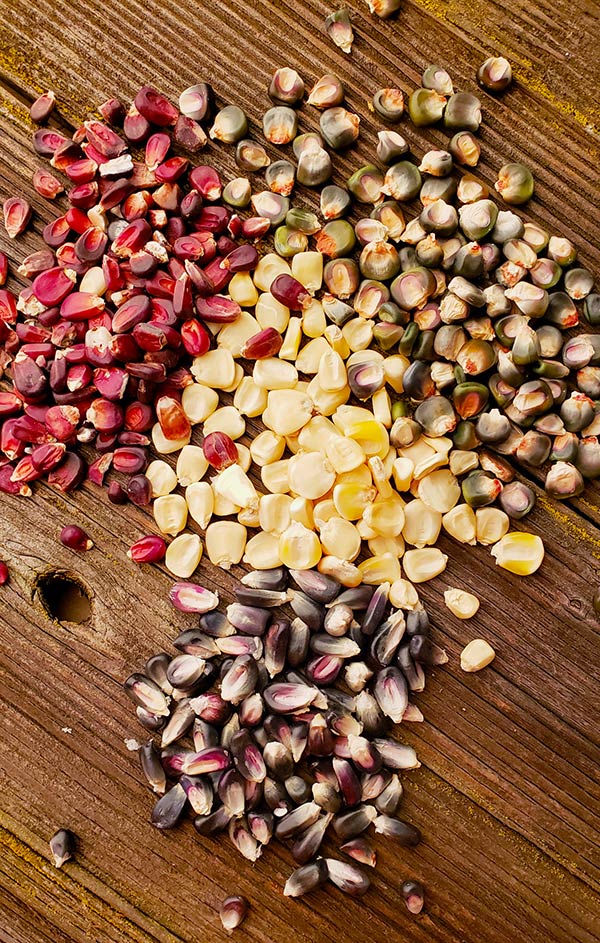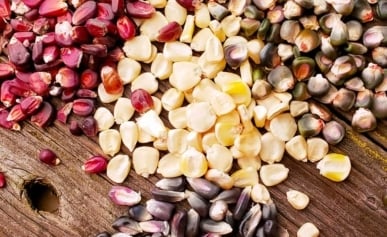As an Amazon Associate I earn from qualifying purchases.

File homemade masa harina, which is masa flour, into the “Because I Can” category. Making masa harina at home is a labor of love, but one I firmly believe is worth your time.
Let’s start with what is masa harina? It means “dough flour” in Spanish, and it refers to fresh corn masa that has been dried to a flour. Masa harina is incredibly useful for making homemade tortillas, tamales or any other food that uses masa because all you need to do is add water and you’re ready.
To be clear it is not corn flour and you cannot substitute cornmeal or corn flour for masa. Masa harina is nixtamalized, which we’ll get into in a bit.
Before we get too far, know that freshly masa is a superior product, hands down. But that requires you to nixtamalize corn overnight, then grind the corn, while it’s wet, fine enough to make a tortilla. It is absolutely doable, but making fresh tortilla masa at home is a post for another day.
Virtually the entire Mexican disapora, whether in Mexico itself or Chicago or Florida, Texas or wherever, uses an industrial masa harina, and most of that is the brand Maseca.

It is not a very good product. Will it make a better tortilla than one you buy premade in the store? Sometimes, but with the advent of “artisan” tortillas on the market, and the expansion of real Mexican markets everywhere in the US and Canada (I found a nice little market in Winnipeg recently), you can often buy better tortillas made at the store itself.
But until very recently Maseca was your only option if you wanted to actually make tortillas or tamales or whatever at home. There are now two companies that make a much better quality masa harina than Maseca: Bob’s Red Mill and Masienda. Both make an excellent masa harina that I can recommend.
Bob’s masa harina is yellow and Masienda’s is white, or really ivory. That has most of your masa needs covered, yes? Well, sorta. You will notice the red and blue masa harina in the picture. You cannot buy that anywhere. You have to make it at home.
The real advantage of making your own masa harina is that you can use any variety of corn you can get your hands on, or grow yourself. Color is the chief attraction here, but also flavor: Some of you reading this are Southerners, and Southerners know that good grits matter.
It’s the same with masa harina, which are, in a galactic sense, just fine grits. Good grits have texture, better flavor and aroma — and they also need to be refrigerated because they’ll go rancid after a couple months at room temperature. Ditto for masa harina.
Here’s how to make your own.

Start with corn. Duh. And if you are going to do this, you want legit, heirloom flour, dent, or flint corn if that’s all you can find. I recommend buying from Masienda, Heirlooms and More, or, for red bloody butcher corn (the red corn in the picture), Breadtopia. Or grow your own.
You absolutely need special equipment, alas. I use a hand grinder, a dehydrator and a dry blender.
I use an old-school Victoria grinder, but Corona makes one that’s just as good. It costs about $50, although if you look on Craigslist I am sure you can find them cheaper. For a dehydrator, there is nothing better than an Excalibur 9-Tray, which, at $180 isn’t cheap, but I’ve used mine for many years for dehydrating everything. I’ll give you some other options in a moment. The dry grinder I prefer is the Vitamix Dry-Grains Container, largely because I already have a Vitamix blender. (Oh, and none of these companies is paying me to recommend their products.)
OK, that’s a ritzy set-up, but hey, I do “Hanksperiments” all the time so I get lots of use out of these devices. The one you absolutely need is the corn grinder. Finding alternate devices that grind wet corn isn’t easy. A cheaper alternative to a dehydrator would be to dry the ground corn in a low oven, or, better, in a hot garage or in hot shade. The lower the temperature you can dry the corn at, the better the flavor.
As for the dry grain grinder, a spice mill or coffee grinder will work fine, just not as fast.
OK, so you have corn and you are set up, equipment-wise. What now? Start by making nixtamal. Huh? Read this post, which walks you through the process. It requires an overnight soak.

How to Make Nixtamal
Here’s how to prep dry field corn to make either fresh corn tortillas, or to get it ready to grind for masa harina.
Read MoreOnce you have your nixtamal, grind it through your corn grinder. You should know that making masa often gives me good biceps… yeah, it’s a workout to grind grain by hand. Think of it as the abuela workout. But it’s not that tough.
Once you have your masa ground, you need to dry it. I lay it out on screens that have the dehydrator sheets on them, so the masa doesn’t fall through the mesh. I dry around 100°F and it takes the better part of a day, about 6 hours.
I then let the masa dry overnight before blitzing it for about a minute or two in the Vitamix. You then have amazing homemade masa harina.
Keep it in the fridge or freezer and it will smell almost exactly like fresh masa when you make tortillas or tamales with it. It is amazing stuff that will convince you to make homemade tortillas more often. After all, you’ll have the masa flour handy.
Just add water.




